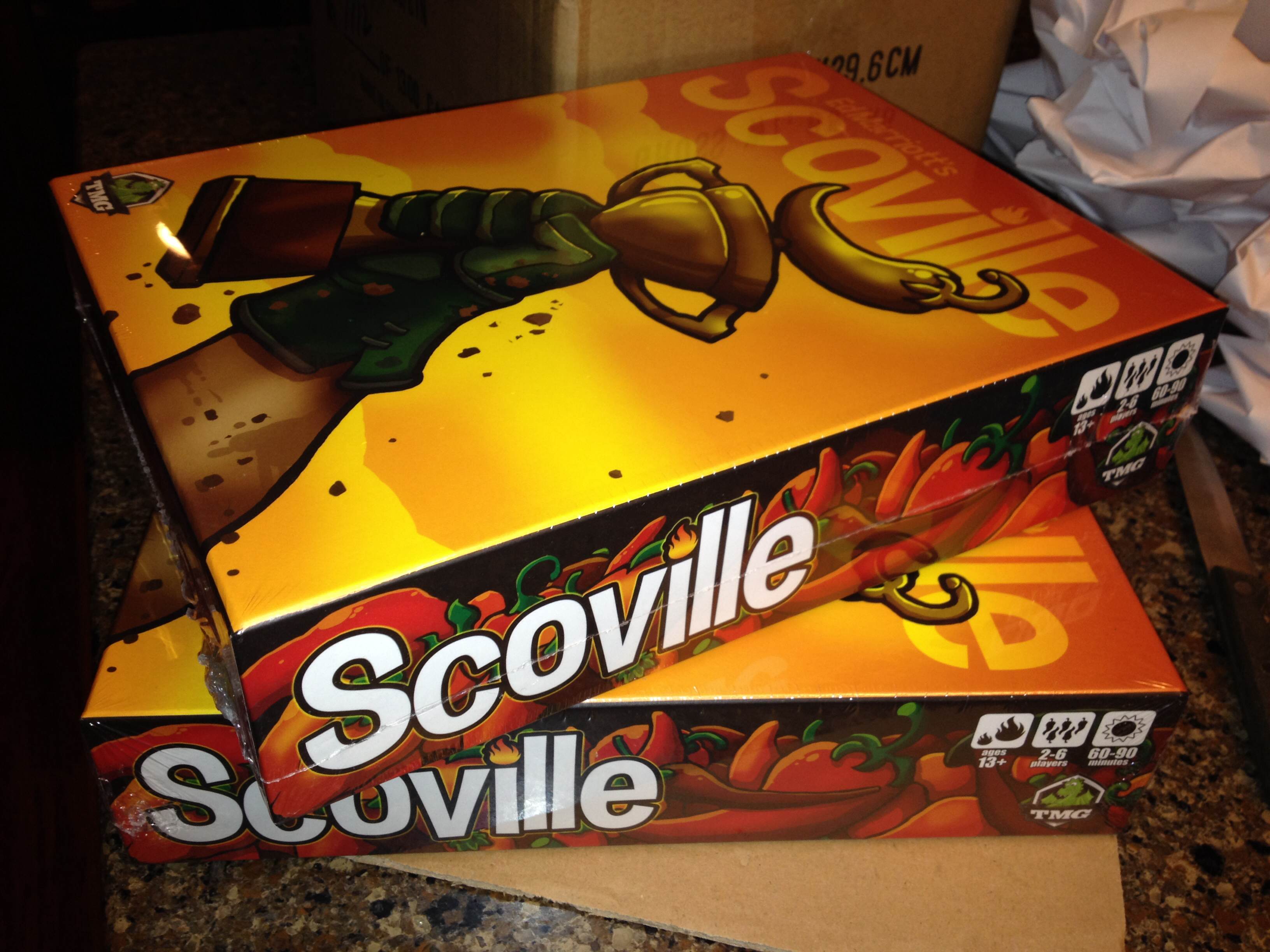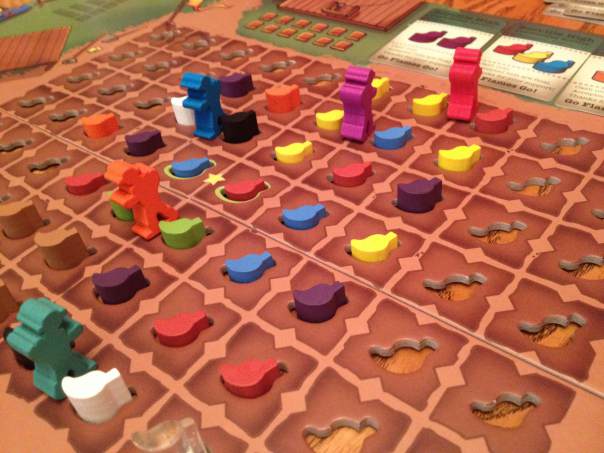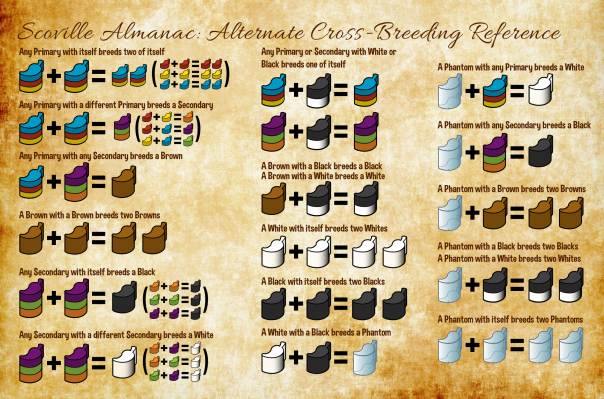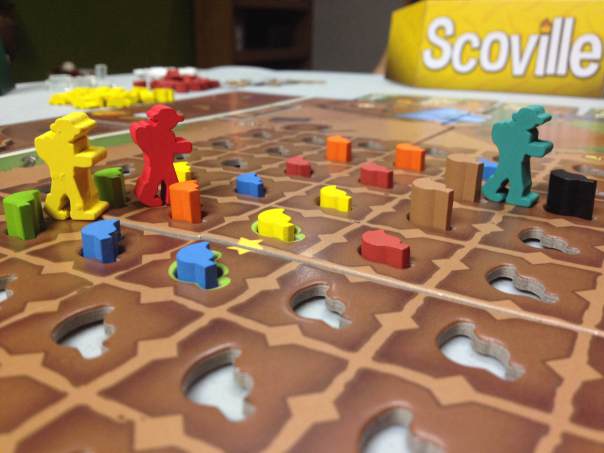Although the farms of Scoville start off rather plain, it doesn’t take long for things there to heat up. Peppers are like that, you see, and pepper aficionados doubly so. The people of this town crave the hottest, spiciest peppers players can come up with, and there’s a tidy profit in it for the person who can do this the best. Still, not every player may have a background in pepper cultivation. Luckily though, Scoville city planner (and local game designer) Ed Marriott has sent along a memo with some tips on how best to get started. And we’re passing that info on to you.
Editor’s Note: This article was originally posted on the designer’s site, Boards and Barley.
Hello Ladies and Gentlemen. With people posting pictures of their copies of Scoville on Twitter and Facebook I figured I should post something about Scoville. This has been an extremely fun ride from the start of the design process all the way through to this point. I can’t wait to start reading reviews and hearing what people think.
So today I have a few tips regarding the game and the components. I will also link to a different version of the cross-breeding chart for those who are more equation oriented.
Before we get into the tips, if you have received your copy, please go ahead and Tweet it, Facebook it, Instagram it, BGG it, or anything else. Let’s spread the word about Scoville and make it a big hit. (Disclaimer: if you don’t like it, please keep your mouth and social media shut. 🙂 Thanks!)
Components:
OCD vs. non-OCD: The board has pepper punch-outs so that the peppers can be “planted” and all line up perfectly. This is great for people who want things all orderly and such. HOWEVER, if you would prefer to be able to put the peppers on the board in any direction, then just don’t punch out the pepper punch outs.
Pepper Punch-outs: “Pepper Punch-outs” is not the name of an expansion I’m working on (though I suppose it could be!). These are the little cardboard pepper shaped pieces you can punch out of the board. I mention them because they come in really handy if you happen to run out on any specific color of pepper during the game. I recommend saving these little cardboard peppers in the box, just in case you need them.
Sleeve the Cards: Some people sleeve cards for every single game they own. Others sleeve them for games with high-use cards. The cards in Scoville are what I would call “low-use.” The cards are only handled when obtaining them and scoring them at the end. Otherwise they just sit around. So I personally don’t feel they need to be sleeved. However, if you prefer them sleeved, check out this thread on BGG which can give some guidance about the right size of sleeves. The recipes are 44x67mm and the market cards are 51x51mm.
Gameplay:
One of the biggest issues I hear from new players is that the cross-breeding chart is too much to grok. So I made a new version that is simpler to read and lists the rules of thumb for cross-breeding. You can download the doc file from Board Game Geek. Or you can save this picture and print it:
That should help you out in case you don’t like the 10×10 grid version.
As I designed the game I struggled mightily about choosing the form of the cross breeding chart. This equation version was easy to read and put things succinctly. But the grid put every breeding combo right in front of you. So I went with the grid. If you prefer this equation version, please let me know.
Beginner Tips
Bonus Plaques and Market Orders: Recipes are mighty appealing, and they should be. But don’t count out the bonus award plaques from the town mayor. Also, don’t neglect the market orders. Many of the afternoon orders are worth 4 points. So if you can get a few of those they really add up.
Bonus Abilities: These are worth 4 points each if unused, but I recommend using them. They can be used to create a huge advantage in the game. One way I like to use them is to gain multiple phantom peppers at a time while preventing all other players from getting any. Plus, the game is meant to be played for fun and I believe it is fun to use those special abilities.
Block other Players: I love how you can block other players from spots on the field. Use this to your advantage. Plant a good combo in a spot only you can reach and then end your turn there even if you’ve only moved one or two spots. This can induce frustration from the other players, which can be fun.
Thanks so much for your interest in Scoville. I believe copies will be moving to retailers and online stores in the very near future. If any of you have issues with your components in your copy, please let me or Tasty Minstrel Games know right away. And if you enjoy the game, feel free to rate it a 10 on BoardGameGeek!
Scoville creator Ed Marriott was gracious enough to supply this designer journal. He can be found most readily via Twitter.
Discuss this, and other articles, on our social media!
Also, would you be interested in visit to Scoville? Then be sure to enter our giveaway contest!
Photo Credits: Scoville Images by Boards and Barley.




